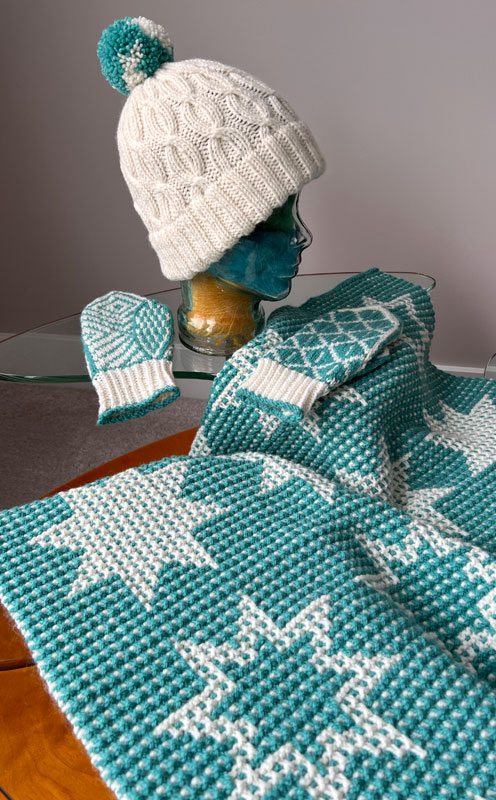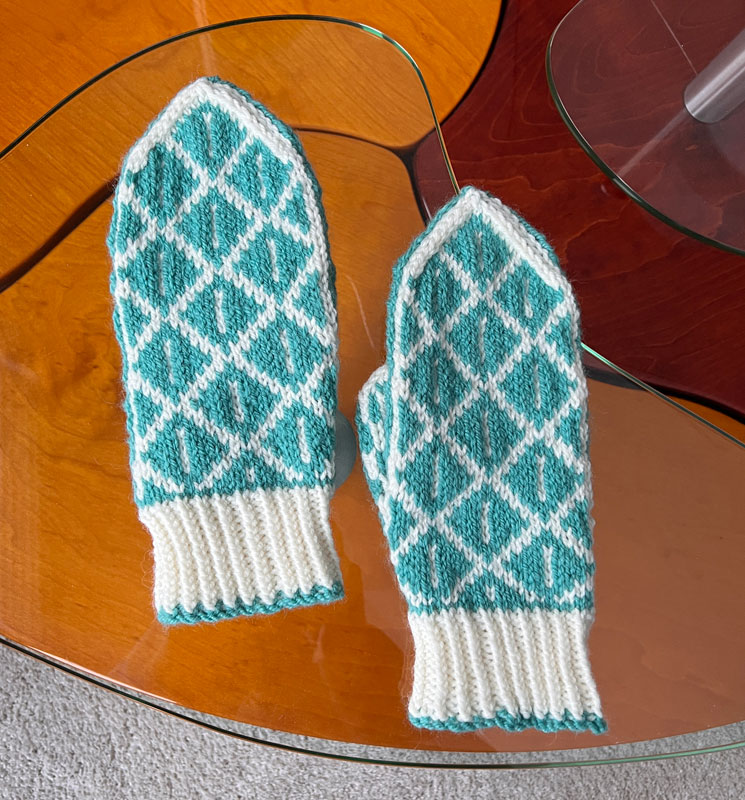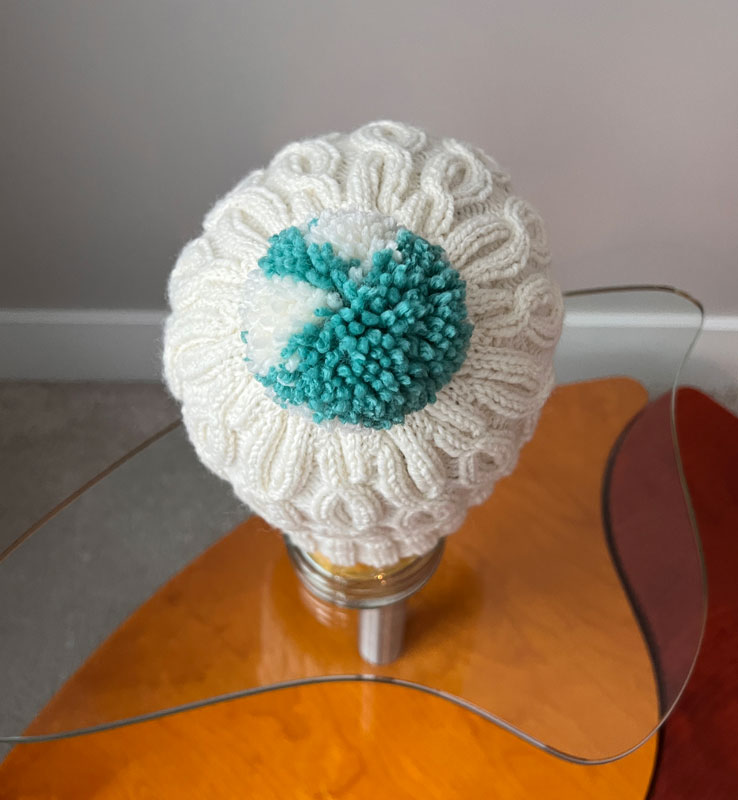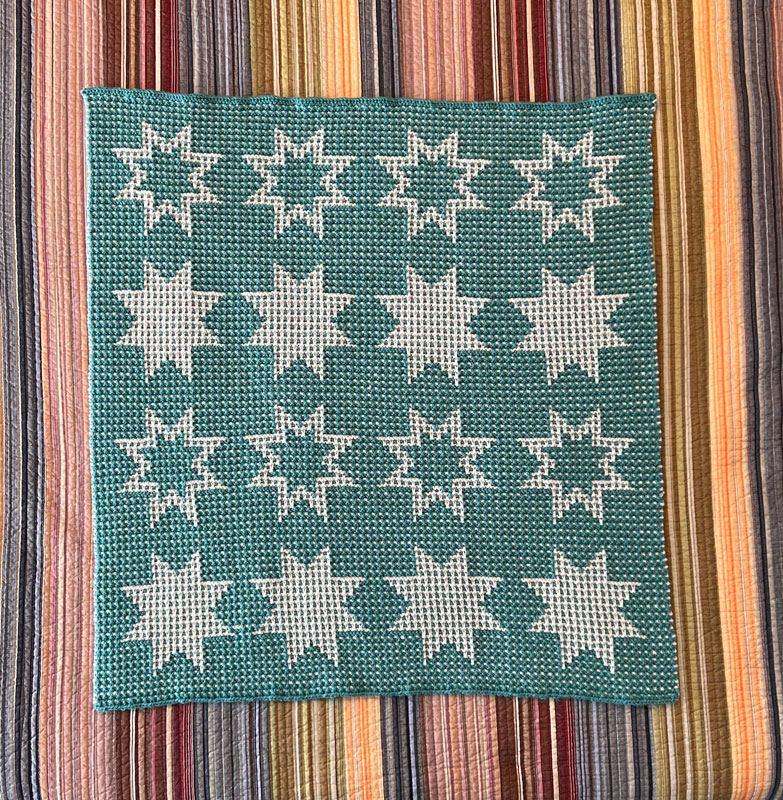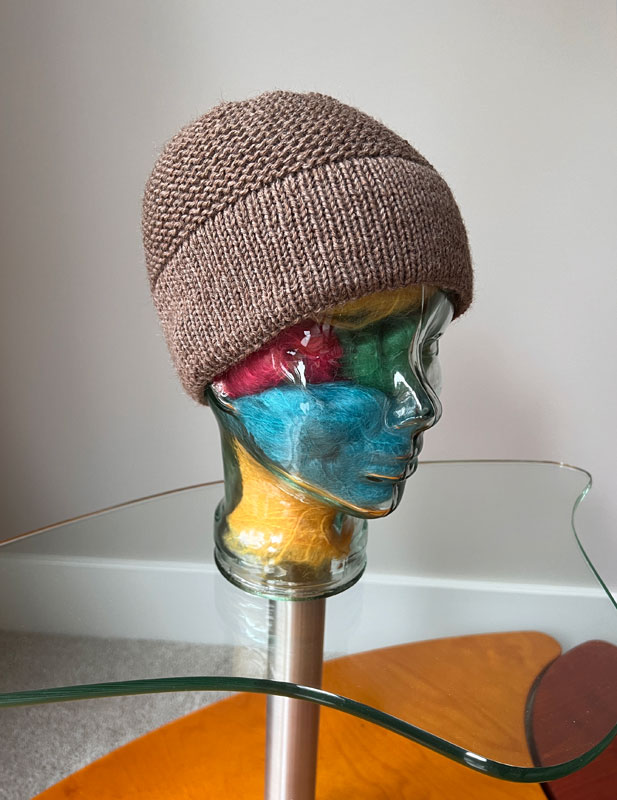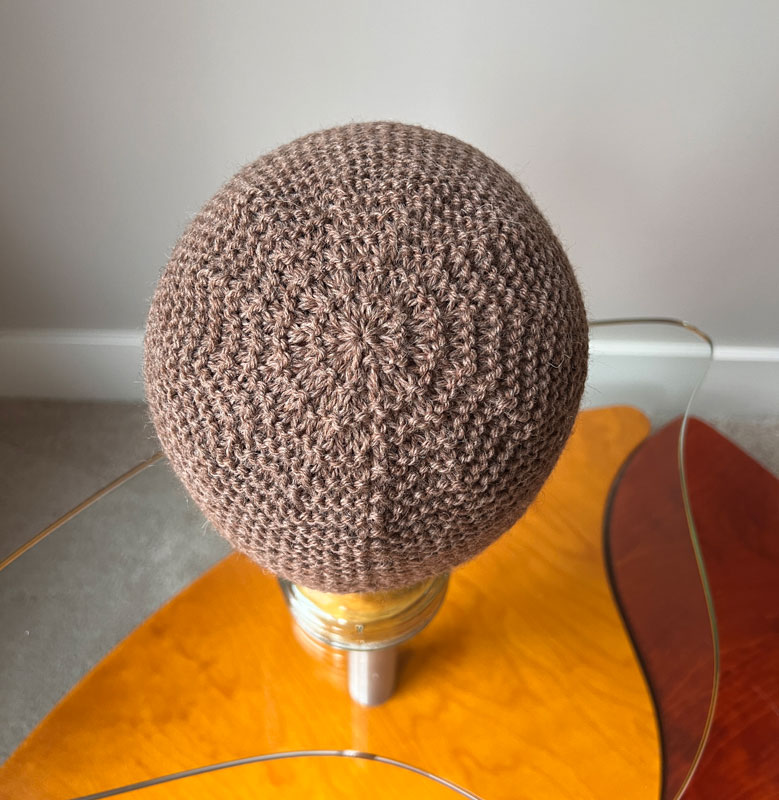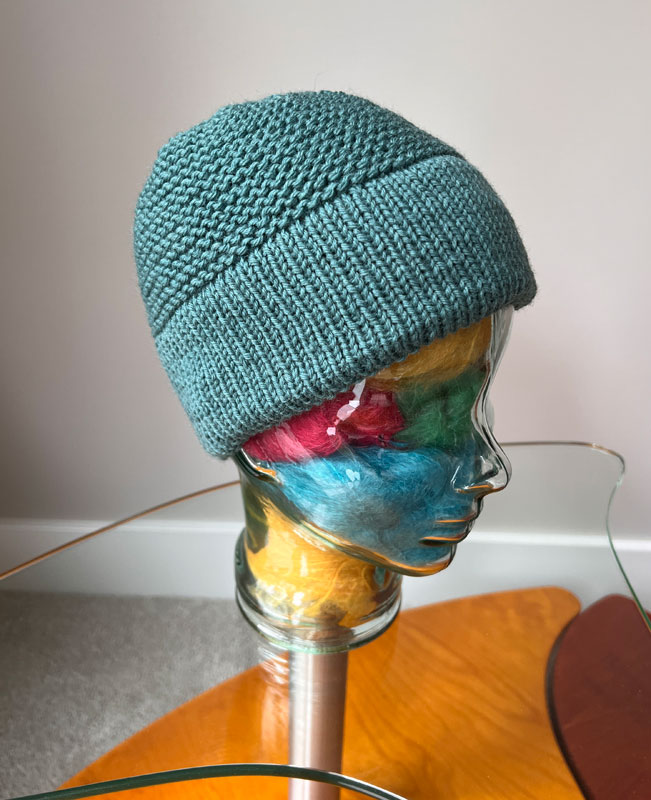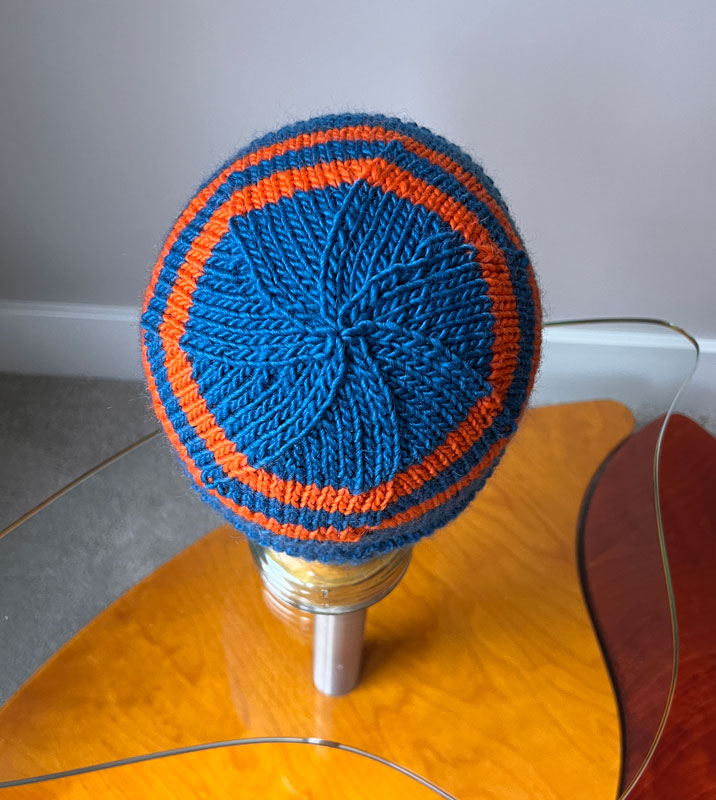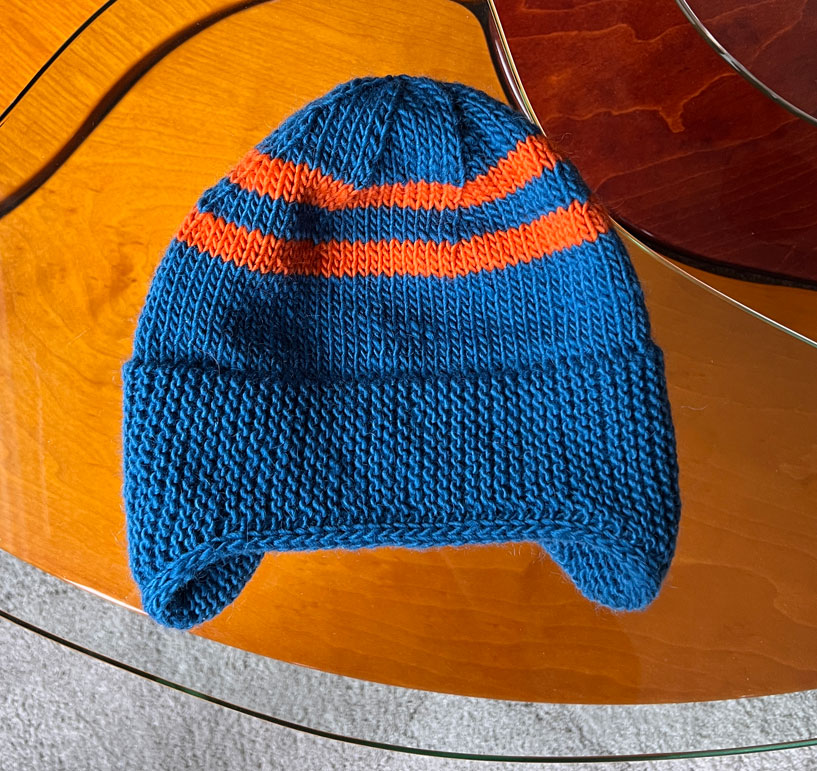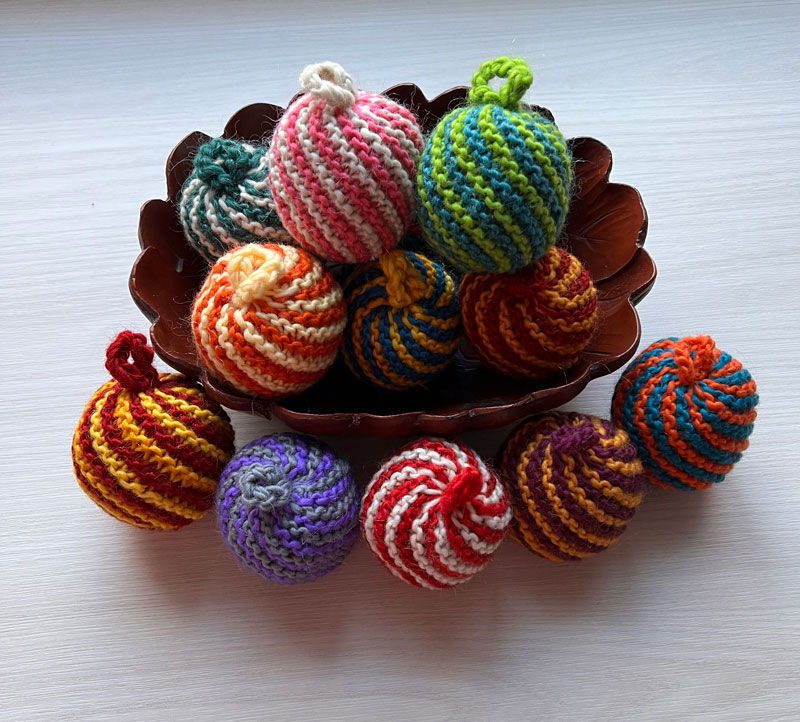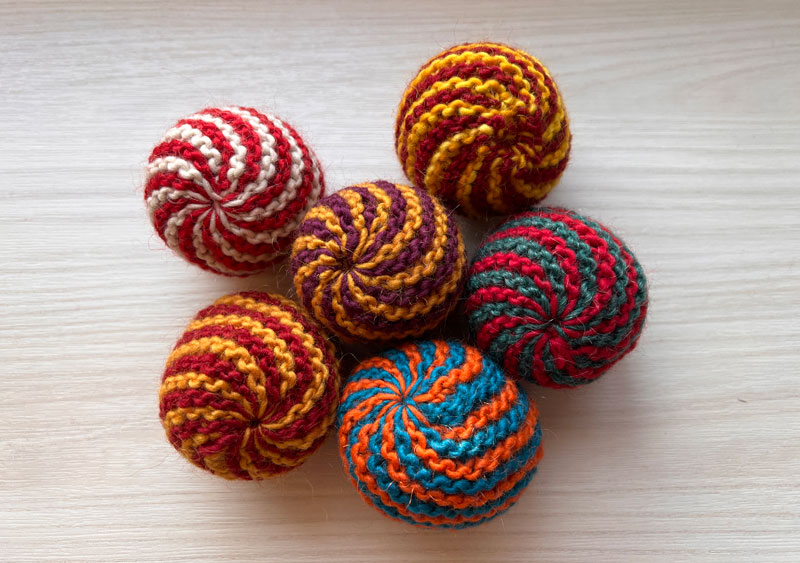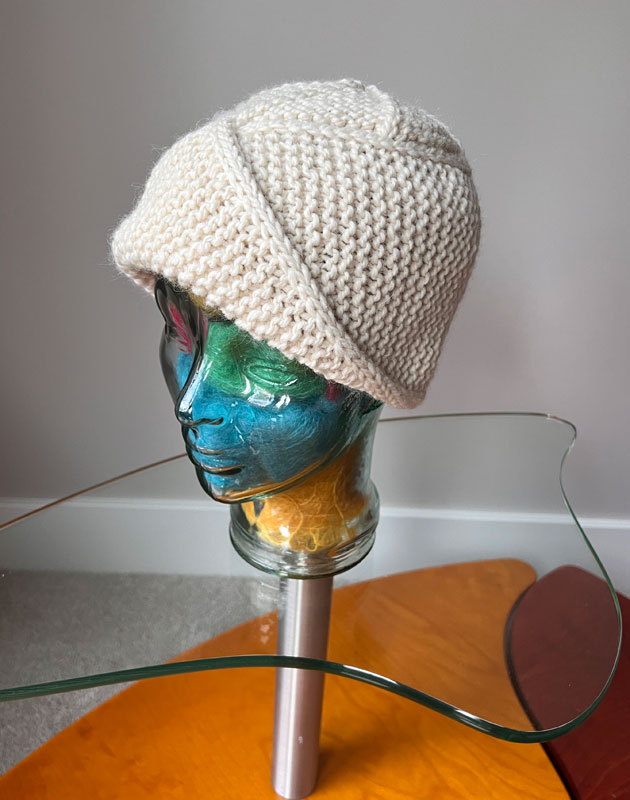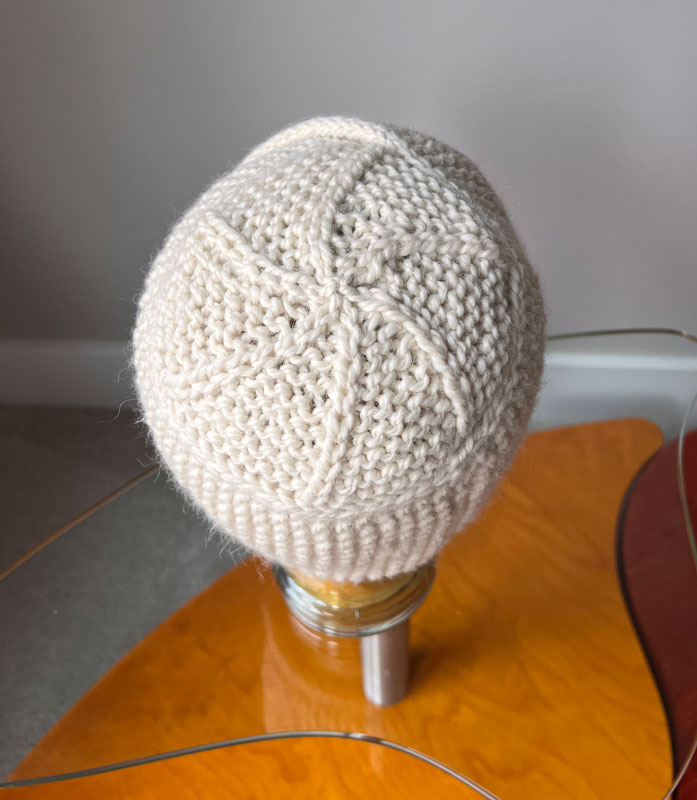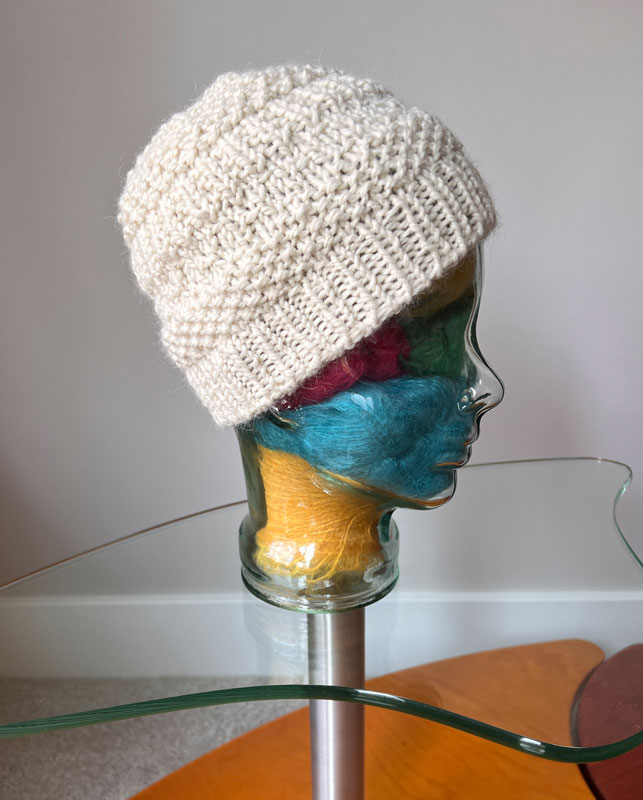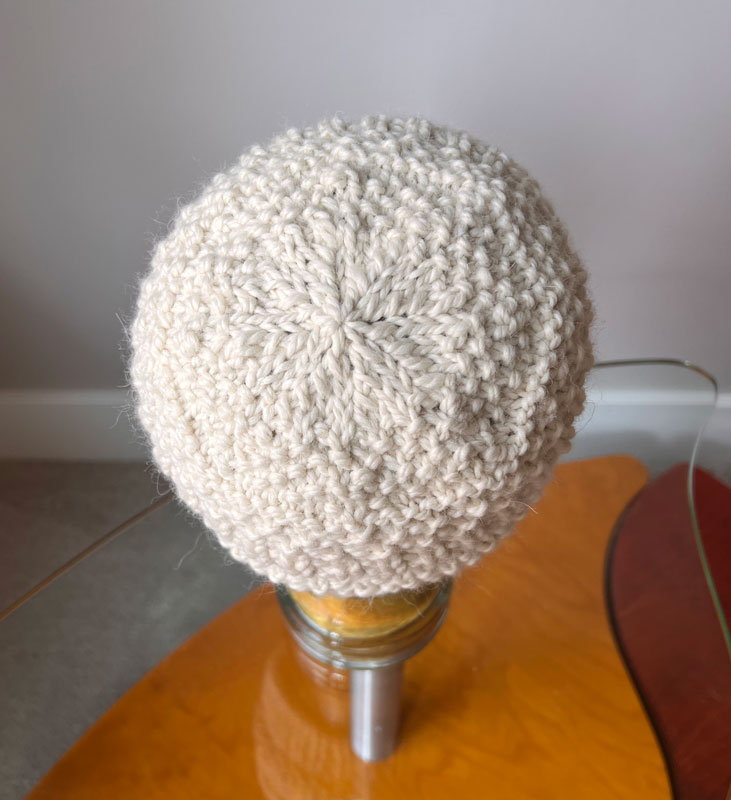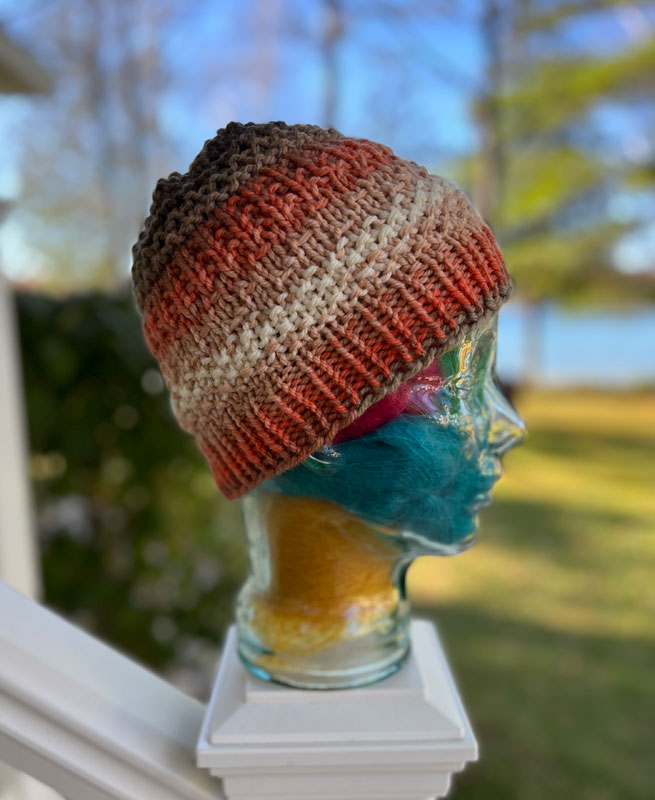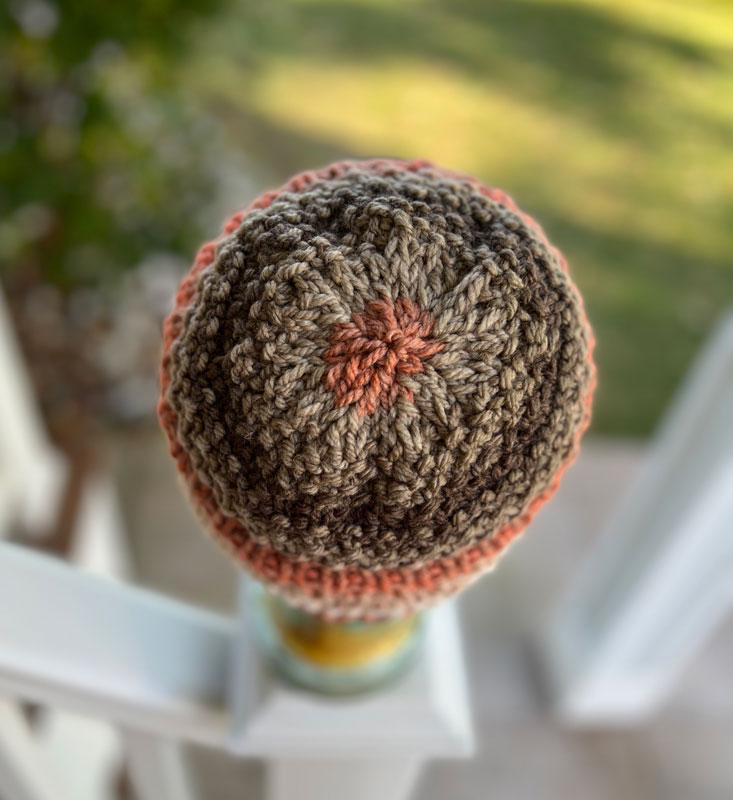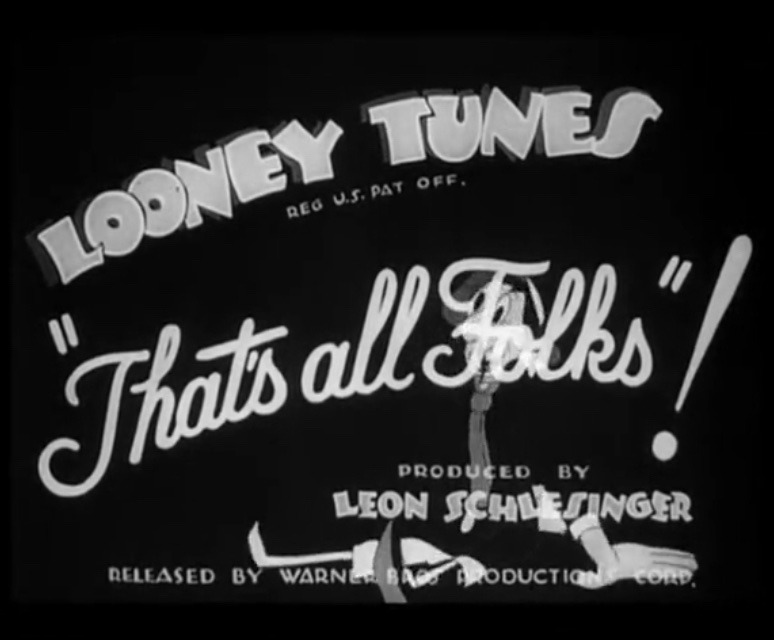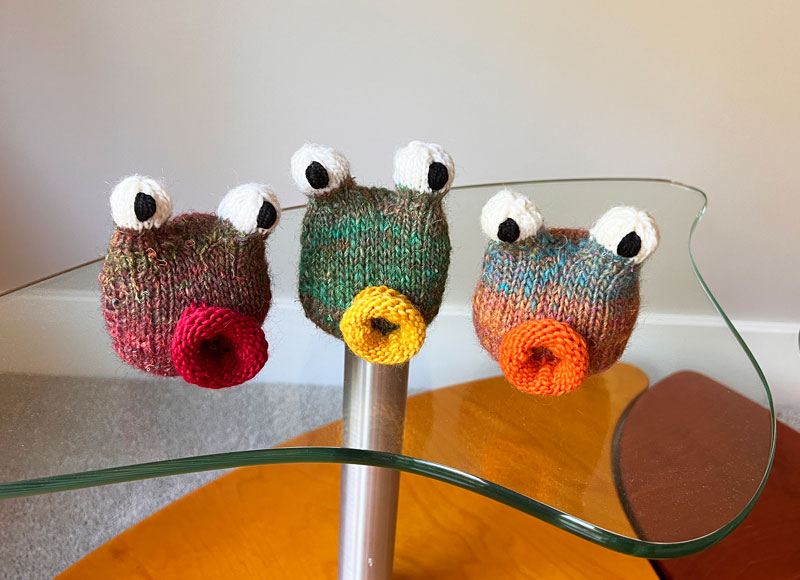
This trio gave me the giggles at every step of the knitting. They are Cheezombie Garden Slugs. I splurged and knit mine in Noro Silk Garden. I love the resultant color-changing nature of their skins–or whatever is the proper name for a mollusks’ outer gelatinousness. Their donut lips and eye stalks are knit in Brown Sheep Lamb’s Pride Worsted. The three bodies together used less than one skein of Silk Garden.
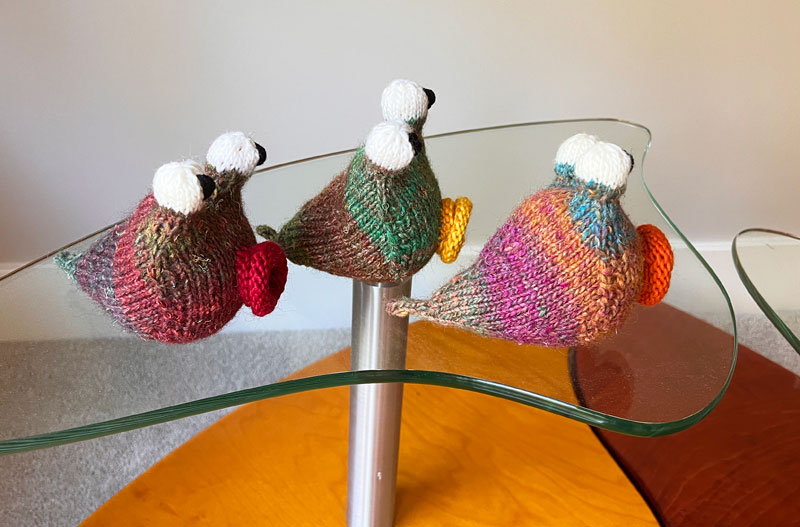
Think of all the gardeners you know, or all the people who don’t garden for that matter, and that’s who’d likely get a kick out of these guys. Their bodies are knit all in one piece. One seam. Sew on the lips. Done. No fiddly little bits to deal with.
These slugs tend to fall on their faces and take a bit of a nap unless you weigh down their tail ends with something. I broke down and bought a small bag of polybeads to bolster this trio. The beads worked well. Except for the part where static electricity took over and stuck them in all the wrong places as I stuffed them into the tails. I was picking up beads from the floor, the table, and even my shirt for a few days.
I gifted this trio of slugs to a trio of sisters, my nieces. They were delighted. My nieces that is. Maybe the slugs were delighted too I suppose.
Next up. Another Annita Wilschut Olivier. Knit in worsted weight this is a large pup.
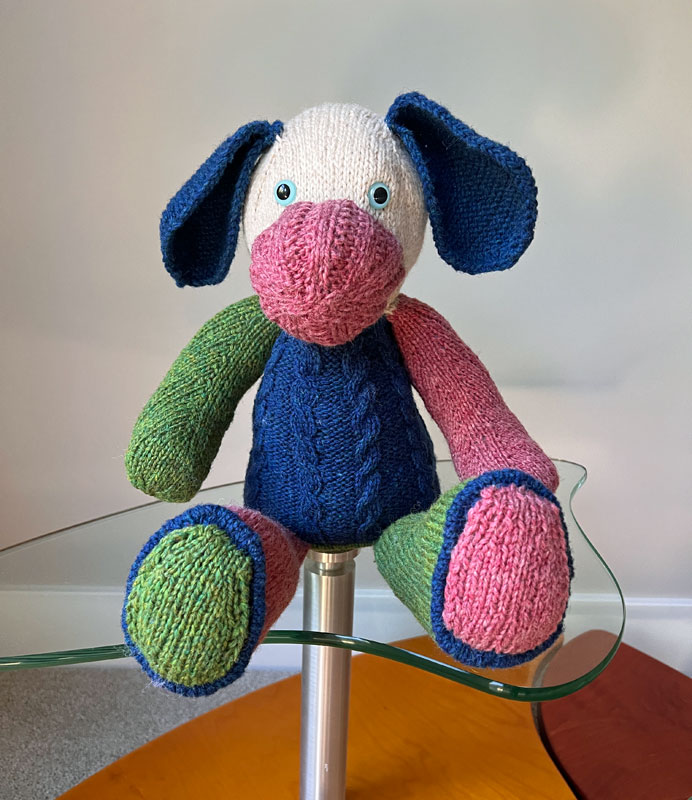
I’ve knit Olivier twice before, check them out here and here. He was basically a scrap yarn pup in my first knit and turned out super cute even though not all his limbs ended up precisely the same size. Knitted critters can be quite forgiving of that. So can children. The next time I knit him in super colorful Brown Sheep Lamb’s Pride worsted. It’s a great look.
This time I used Jamieson’s Shetland Heather, an Aran-weight. A good friend gifted me six 50-gram balls. Olivier consumed just over 200 grams,
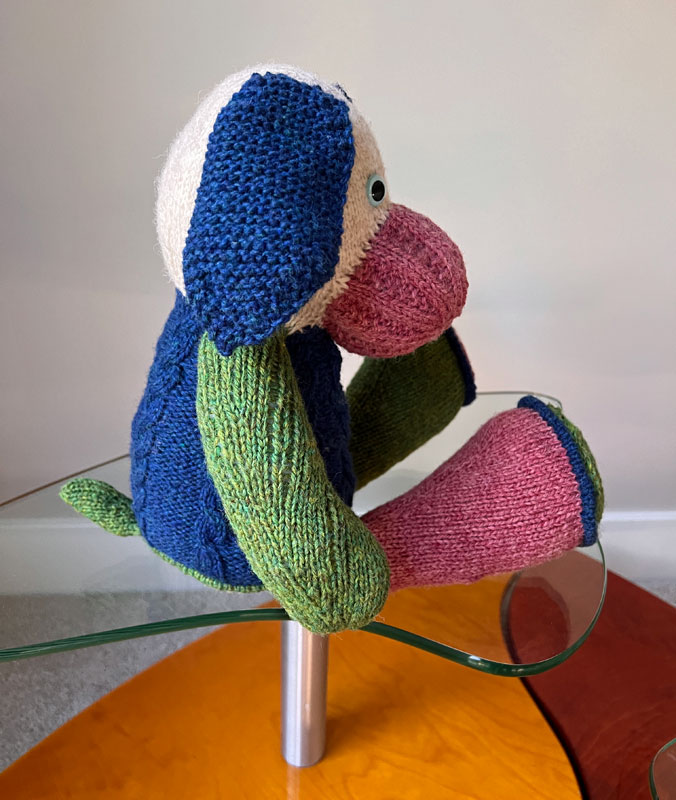
His color scheme worked out really well. He’s been gifted to an adult and she couldn’t be happier with him.
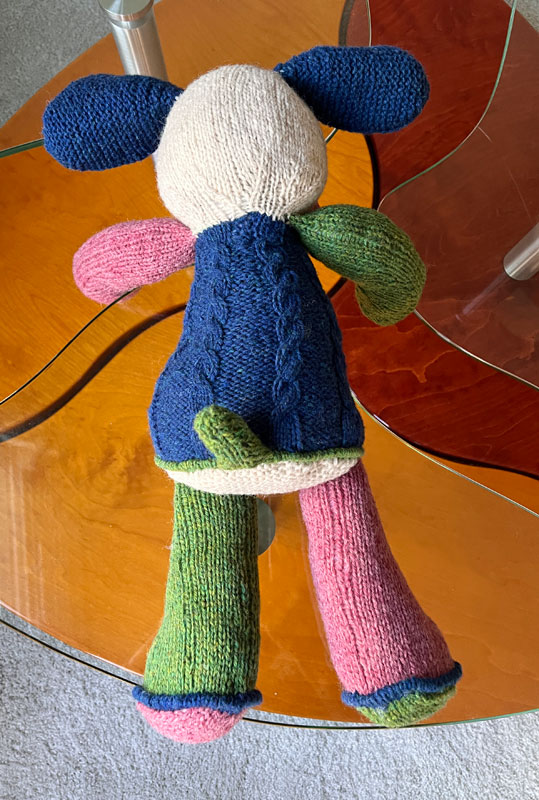
The goofy little tail is probably my favorite body part.
There’s finally been a few sunny days here in southwest Michigan. Thirty one days in January and the sun shone on only one of them! Sunshine makes a knitter think spring. So do Claire Garland’s Sitting Hares. I knit mine in DK Schachenmayr Merino Extra-fine 120.
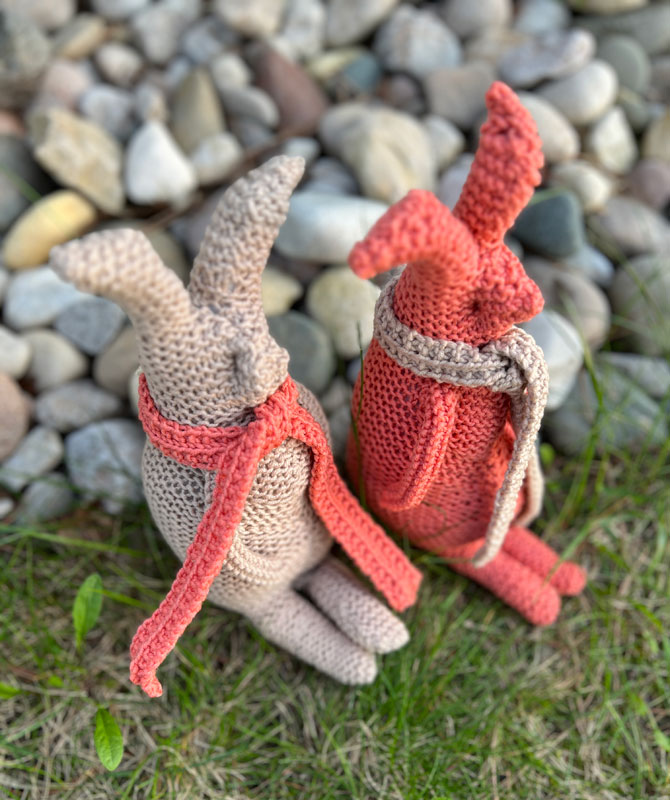
Sitting Hare is an easy garter stitch knit. Just a touch of short row shaping give them a subtle hare-like gesture. A quick fun knit.
How about one more look at that slug trio?
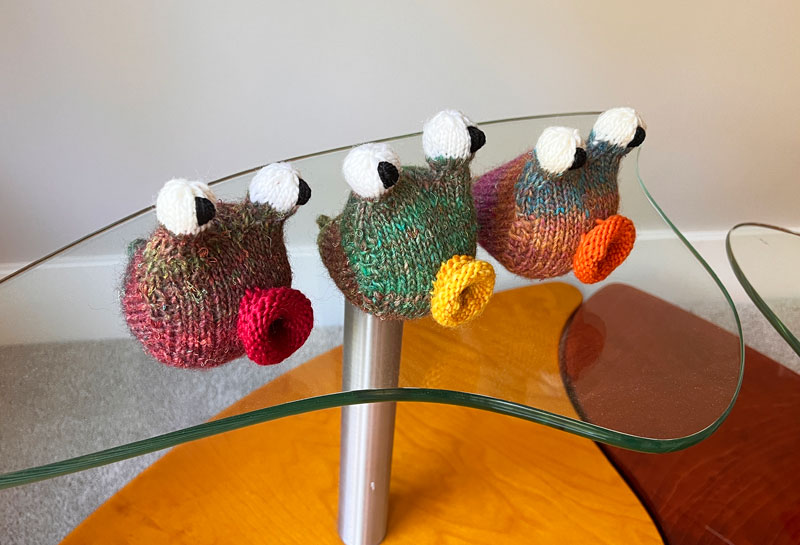
Some knitters knit these slugs by the basketfuls. I may need to knit a great big glob of them in a bunch of sizes. Changing the weight of the yarn and the needle size would do it. Maybe I’ll even knit a few slime paths to trail behind them. Such silliness. Critters definitely bring out that goofy inner child in a knitter.

